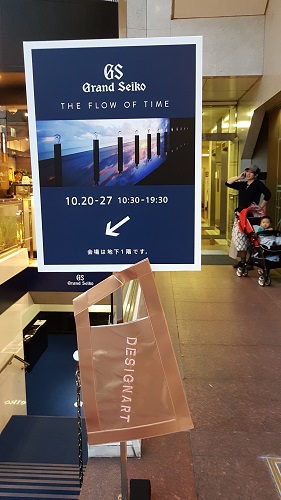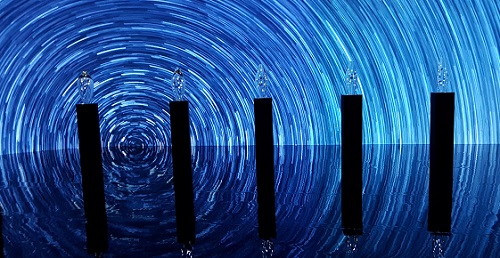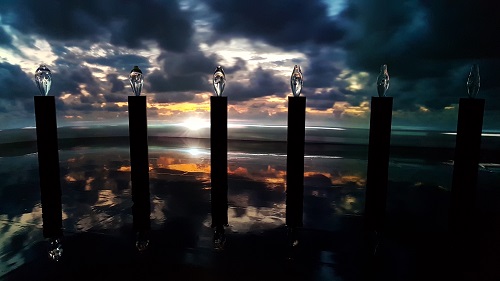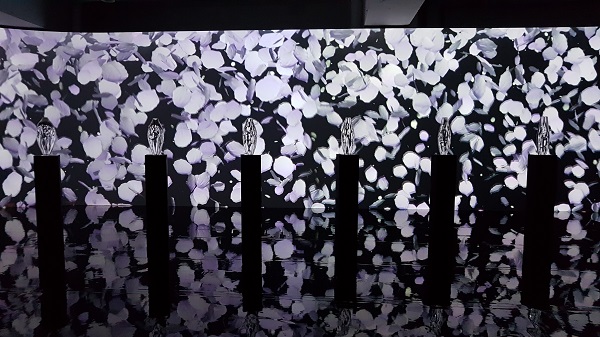October moves into its final week and I am more acutely aware of the flow of time as my stay here is limited to the end of November. There are only so many days until Christmas, and in what will seem like milliseconds we will be ringing in the New Year.

Thus, on Tuesday evening I was first attracted to the title The Flow of Time when I stumbled upon several more DESIGNART TOKYO 2018 installations I’d missed on previous outings.

A dark blue carpet led to blackened subterranean rooms in which the installation played. Progressing from a starry night through sunrise the film captured both a moment in a year and the progression of a day as it looped through a succession of startling images which were mirrored from the floor.

In front of the film loop glowing lamp posts contained over 200 watch parts while a single timepiece marked the minutes and seconds as they passed.

Again, except for a few paragraphs on the wall at the exhibition’s exit, I deeply felt the absence of information in English. I was left wanting greater depth of understanding of the creators’ state of mind. However, there I did find this:
By looking at the smooth movement of the [Seiko] Spring Drive’s second hand, gliding across the dial without a sound, the most obvious fact takes your breath away. Time in nature flows without a “tick.” As a result of aiming for the ultimate precision, Spring Drive has reached a new dimension that makes you feel the transience of time, approach the essence of time.
On the Grand-Seiko website Google translate offer these somewhat unsatisfactory excerpts (but not atypical explanation in these parts) from company Chairman and CEO Shinji Hattori :
The theme of this exhibition … is the “flow of time” in Japanese aesthetic sense. …we are now promoting “the aesthetic sense of Japan” that underlies the Grand Seiko brand … I wanted to disseminate it to the world through “emotional expression” art.

Available in full on YouTube, the small screen experience is quite unlike feeling the work in a cavernous, blackened room where (in the absence of any information about it but walking into the installation cold from the street) the wonder of the exhibit is nothing at all like a marketing tool.
Rather, it truly is “emotional expression art,” an affecting work that prompted me to sit through several loops—mesmerized, enchanted and acutely aware (again) of the pathos of things. Mono no aware.
